Google Search Queries in your Digital B2B Marketing
A guide on how to make the most out of User Search Intent
No time? Read Summary
Table of Contents
Subscribe to our Newsletter and Learn B2B Marketing.
Google’s Search Intent – also called Search Query – is an essential marketing strategy: Answering customers’ questions and helping to get what they need.
Google differentiates between four different user intents:
- Informational
- Transactional
- Commercial
- Navigational
These different intents of a search can be aligned with the User Journey. The result is a game plan for your Digital B2B Marketing strategy.
Let’s go.
What is Google Search Intent?
Google processes 63,000 searches per second and around 2 trillion searches per year. But how is this seemingly endless amount of search queries categorized? How can you take advantage of these categories?
Answering questions your potential customer has is a simple yet powerful marketing strategy. For your digital B2B marketing, this means providing content searched on Google. The concept of different search intent types is essential for SEO. If you want to rank these days, you must create content with searcher intent in mind.
What does that mean? Google search intent refers to the reason someone makes a search engine query. In other words, why did the person do this search? The user may be looking to learn something, make a purchase, or find a particular website.
Why search intent matters
Google aims to provide users with the most relevant search results for the search query. This statement may sound simple, but it is the fundamental working principle of the search engine. Google’s missions can’t be more precise:
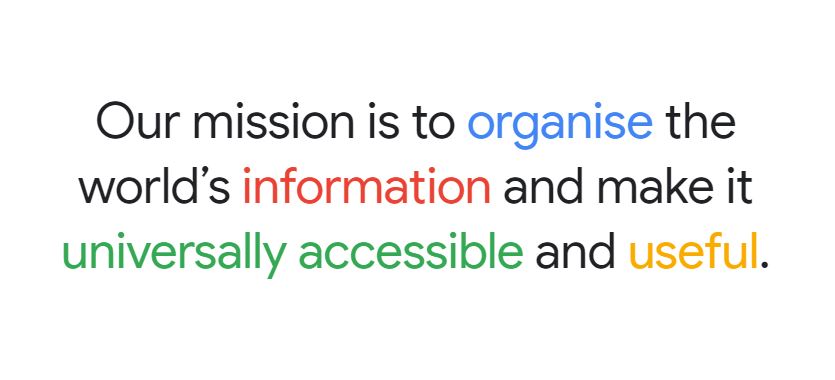
Further, this approach is also a genius marketing strategy. It is nothing less than the fulfillment of a customer’s need. In the case of Google searches, it is evident that this need is information.
But it is not that simple.
The user’s intention comes before the search query. Every Google search is done with a defined purpose. Many people do this instinctively, of course. They just start to type. Sometimes ask a question, sometimes look for a brand they know, and sometimes users simply type in a keyword. The intention of these searches differs. We will have a closer look at the search intent types below.
Why does any of this matter for B2B marketers?
Because to rank in Google in 2022, your business needs to be the most relevant result for the query. That means creating content that aligns with types of search intent.
Definition of Google search intent
Based on definitions by Semrush, Moz, Backlinko, and Yoast, a search intent or search query is defined in the following:
Search intent (also known as user intent, keyword intent, or audience intent) is the primary goal a user has when searching a query in a search engine. Common types of searcher intent include informational, commercial, navigational, and transactional.
In a nutshell, it is why someone conducts a specific search.
In their General Guideline, Google includes four different types:
- Know
- Do
- Website
- Visit-in-person intents
Let us have a closer look at the different types of search intent.
Types of Search Intent and Google Search Query
For clarification, there are different types in use. While Google categorizes them in Know, Do, Website, and Visit-in-person intents, the SEO industry typically uses Informational, Navigational, Transactional, and Commercial Google search queries. Here is an overview to sort out the terminology:
Overview of Google Search Intent Terms © B2B Marketing World
In summary, users have different intents when searching the web. Google’s goal is to fulfill these intents with search results as suitable as possible. There are know, go, website, and visit-in-person queries and informational, transactional, commercial, navigational, and brand search intents. Let us have a closer look at the different types of Search Intent.
1. Informational
The user intends to find information, and these searches are an indication that people want to learn something. Users often phrase their searches as questions and use who, what, where, why, and how.
Google distinguishes between “Know” and “Know Simple” searches. The difference is that “Know-Simple” searches provide specific answers, such as a fact or diagram. For example, “How tall is Barack Obama” or “Barack Obama height.” In contrast, “career Barack Obama” cannot be answered with a simple number or just a sentence. “Know” queries, therefore, requires a more extensive answer.
Specific questions leading to a Know Simple answer might be shown in a Knowledge Panel (Knowledge Graph). They are a type of rich results and appear at the very top right-hand position. However, this premium spot does not necessarily lead users to your website, as their question is answered already.
Therefore, receiving relevant traffic is much higher for Informational queries categorized as “Know” intentions.
2. Transactional
Users try to complete a specific action, not only searching for information. They are already in buying mode but not necessarily ready to make the purchase. This intention is not restricted to just purchases. Users doing transactional searches may also want to complete email signups, form submissions, store visits, or phone calls. Accordingly, these searches go beyond purely gaining knowledge.
Google categorizes transactional intents as “Do” search queries and characterizes this search intention as a desire to download, purchase, entertainment, or interact with the website or an app. Examples of such searches are “How high is my body mass index,” “Buy iPhone13,” or “Download TikTok app.”
A noticeable fact is that Google considers both Transactional and Commercial intentions as “Do” queries. However, a distinction between these two search types makes sense, as commercial searches fit the customer journey’s consideration phase. Whereas transactional searches are more likely part of the decision phase. We have a closer look at these differences later in this article.
3. Commercial
Commercial intent is like the combination of informational and transactional queries. Users search intending to find purchase relevant information. The searcher looks for a specific product or service but has yet to determine which solution is best for them. Commercial search queries represent what your customers are searching for before they make a purchase.
As mentioned, Google categorizes these intents as “Do” queries to gain information on a soon-to-be-made purchase. Example searches are: “Best smartphone for under 800$”, “Review of marketing automation tools,” or “supplier A vs. supplier B.”
4. Navigational
These search queries have a specific website as their target. The user intends to visit this website. This implies that the user knows at least the company’s brand name but not necessarily the correct URL of the website. For example, “Youtube” or “B2B Marketing World”. These requests are often attributed to user convenience. It is likely faster and easier for them to Google a URL than type it into the address bar.
Navigational queries are also referred to as Brand queries, as the user often knows the company and brand.
Google names these types of searches simply “Website.” This is noticeable as Google uses an own search type for just brand-related searches. This implies how important it is to rank with your brand name.
5. Visit-in-Person or “Near me searches.”
The visit-in-person intentions are mainly relevant for mobile searches. Google identifies those searches that suggest a geographical, local result. For example, the smartphone search for “Italian dinner,” “bank nearby,” or “where can I park here.” Depending on the location, these search intentions lead to significantly different results. In big cities like New York or Berlin, the focus of search engine optimization for “local queries” can be just a few blocks. This intent is also called “near me searches.”
Google Search Intent Examples for B2B Marketing
The above examples were mainly from a consumer marketing perspective for easier understanding. The following search intent examples are from Business-to-Business.
Informational search intent
Searches to gather information often includes who, what, where, why, and how.
- “How to measure the density of oil?”
- “What is the melting point of C15 steel?”
- “Who regulates the import of corn to Brazil?”
- “Electrified propulsion system”
- “Heavy lift crane”
Transactional search intent
People try to complete an action that goes beyond information research:
- “Buy oval head screw”
- “Bosch automatic transmission specification”
- “NXP semiconductors support hotline”
- “Where to buy stainless steel?”
Commercial search intent
Searches aimed at purchase preparation and increasing knowledge before the purchase.
- “Toshiba vs. Mitshubishi industrial air condition”
- “Local support of Samsung screens Tokyo”
- “Review of Innolux G104X1-L03 LDC module”
- “Export of Gautam rice from India to Germany”
Navigational search intent
The user knows the company, brand, or product.
- “LG screens”
- “Shandong Steel Group Europe”
- “American Crane and Hoist”
- “Toshiba in Germany”
Search Query and Customer Journey Phases
Understanding searcher intent is essential to meeting the intention and fulfilling the demand. Each intent can be related to a typical phase of the customer journey.
Not every intention can be identified, and the journey phases are sometimes blurry. However, the approach below provides a basic framework for developing your content and channel strategy based on search intention and customer journey phases.
I call this approach the “Search Journey.”
Journey Phases
A typical Customer Journey or Buyer’s Journey is divided into 4 phases:
- Awareness
- Consideration
- Decision
- Retention
Search Query for different customer journey phases
In B2B marketing and sales, the awareness phase is particularly important. You may think, “but the decision phase creates turnover.” While this is true, the awareness phase is an unused potential and a potential chance to stand out.
The target group gathers as much information as possible about a problem during the awareness phase. Since B2B products and services are usually more complex than consumer goods there is a high demand for fact-oriented, knowledge-oriented content.
This is heaven for Informational Search Intent.
This aspect, therefore, makes informational queries so crucial for industrial companies. And yet, marketers primarily focus on product information. We typically see B2B marketing centers USPs, features, and other product and service-related information.
However, these types of information instead fulfill transactional and commercial intents. This circumstance is a cause of low organic website traffic and poorly performing B2B marketing campaigns. The customer intent has not been fulfilled.
Remember Google’s mission to “organize the world’s information and make it universally accessible and useful.” Your company needs to contribute to this mission. Otherwise, your competition will do so.
The search intentions are related to the user journey phases in the following image. This framework is the base for your digital content strategy.
Search intent for different customer journey phases © B2B Marketing World
To succeed in the B2B market, companies must now incorporate this insight into their marketing strategy. Content strategy and digital marketing strategy are at the heart of this. We will examine this idea in more detail in the next chapter.
How to use Search Query in your B2B Marketing
The first step is to understand users’ different search intentions when they perform a search. This sounds easy. And it is easy. Nonetheless, industry surveys and studies have shown that product advertising and brand communication are essential in B2B marketing. Which they are. But only in addition to content that focuses on the informational journey. Therefore, your marketing strategy needs to cover the whole user journey, including all search intents.
This chapter outlines the following steps:
- How to identify the searcher’s intent
- How to optimize for different search intents
- How to make use of keywords intents in your marketing mix
How to identify the searcher’s intent
The search intent is often evident from the query itself. There are two ways of finding the query: offline and online.
- Offline
Your sales team talks to the customer every day. They know all the questions your target group has. Create a database with all these questions and filter them according to the intention. If you have the chance to join customer meetings – do so! You will be surprised by how much you can learn by listening to the customer’s questions.
- Online
One option is to use professional SEO tools like href or Semrush to find queries for a specific keyword. The major SEO tools provide a report that outlines questions, related keywords, etc., for a search term. This is an excellent start if you create new content.
Another way to identify search intents is to analyze your Google Search Console. Click on “search results” and see all queries that lead to clicks and impressions. Categorize them according to the user intent and create content to meet this need.
Anoter option is Answer the Public. This website provides you with countless questions on any given keyword. It is a great way to understand which questions may occur for a topic. This initial search can be cross-checked with your SEO tool of choice to find the most relevant longtail keywords.
Independent on how you identify search queries and intents, make sure to structure them for each core topic of your company. This is the essential base for your next steps in optimizing your content.
How to optimize for different search intents
Content should be created to satisfy search intent. This is all. This is the secret.
But is it that simple? Yes and No.
- Yes, because this strategic approach is easy to understand by all relevant people in your company. If the keyword has an informational intent, write a blog post. If it has commercial intent, optimize your webshop page. Everyone can realize this fundamental content marketing strategy.
- No, because the four search types are not always binary.
For example, the search query “heavy lift crane” seems to have transactional intent. The user may know that he needs a heavy lift crane and is looking for a supplier. But this query may also have an informational intent. A child is searching for a short description of heavy lift cranes to understand the term. This example shows that search intents may need further context.
Unless the search query is 100% clear, “buy oval head screws for industrial usage,” additional data is necessary to create content based on searcher intent.
Here are some additional data points to interpret user search intent based on search queries.
What ahref calls the “3C’s of search intent.”
The 3C’s stand for:
- Content type
- Content format
- Content angle
AHREF argues that by analyzing search results by these three aspects, you understand what Google finds relevant for this specific query.
If the content type of the first three organic Google results is, e.g., a blog post, the intent is likely an informational one. If the content format is reviews, the search intent was most likely of commercial nature.
The idea of a content angle is a bit harder to understand. Let us examine the search query example “buy steel.” The first three search results have a similar angle. They all mention the option of purchasing online. While “buy steel” is already an obvious intent – transactional – the content angle analysis clarifies that users searching for “buy steel” want an online purchase option. Therefore, providing your contact information on a website landing page is not enough. If you want to rank for “buy steel,” you are bound to have an online store available.
Further data from Google
Google uses rich snippets to provide information without visiting a website. The Knowledge Panel and the “People also ask” section gives additional insights. As Google offers both sections, both areas are likely good answers to the users’ search intent.
Visit top ranking pages
This is an easy-to-do job. Just click through top ranking pages, read the content, and understand the standard solution these pages provide. This qualitative check is beneficial if the search query is just a one-word keyword. I recommend doing this final check to get your human perspective on the subject.
Combine Google Search Query and User Journey
This article has described why understanding search intents is vital for your marketing. The four phases of a typical user journey provide a framework for your content strategy.
The aim is simple: provide content relevant to the user at the right time via the right channel.
The following overview helps create the foundation of your content and marketing channel strategy. Let us combine the four search intent types and user journey phases.
Informational Searches in the Awareness Phase
- Intention: To search for information to solve a problem
- Marketing goal: attract attention, show how to solve the problem, and explain backgrounds to create trust
- Content: facts, educational content, basics, working principles, instructions, etc.
- Assets: blog articles, wiki articles, eBooks and whitepapers, etc.
- Channels: blog, publications online and print, knowledge hubs or wikis on a corporate website
Commercial Searches in the Consideration Phase
- Intention: To understand the different solutions and how these solve the problem
- Marketing objective: Present own solution and position it in comparison to the competition, top-of-mind solution provider
- Content: facts with branding character
- Assets: brochures, guidelines, product pages, solution descriptions, practical examples, etc.
- Channels: website, newsletter, podcast, how-to guides, etc.
Transactional Searches in the Decision Phase
- Intention: Make the final decision and make the purchase
- Marketing objective: Trigger purchase and influence the final decision
- Content: product description, comparison lists, social proof, etc.
- Assets: success stories, testimonials, price and feature comparisons, fact sheets, etc.
- Channels: website, webshop
Navigational (Brand) Searches in the Retention Phase
- Intention: Provide service and help with the product, cross-selling and up-selling
- Marketing goal: Retain acquired customer and make him a loyal customer
- Content: tips and tricks, branding and emotional content, “be part of the community,” customized content, special offers, etc.
- Assets: dynamic product pages, customized login area, user videos, service videos, cross-selling and upselling advertising, etc.
- Channels: website, service pages, community forums, restricted login areas of a website, etc.
This overview provides a basic framework for a content and marketing channel strategy. Use it to create your individual marketing strategy and marketing plan as a base.
Summary
Google’s Search Intent is an essential marketing strategy: answering customers’ questions to get the service or product they need. While it looks like every search query on Google is a query for information, Google breaks down a search into four categories: Informational, Transactional, Commercial, and Navigational.
What is a Google search intent, and why is it important?
In a nutshell, a search intent or user intent is why someone uses a search engine. The user may be seeking information, looking to make a purchase, or searching for a particular website. This concept is essential for every B2B marketer. To rank in Google’s search results in 2022, your business must be the most relevant result for any given query. This means creating content that responds to a particular type of search intent.
4 Search Intent Types
- Informational
The user intends to find information, which indicates a desire for learning. Typical searches start with who, what, where, why, and how.
- Transactional
Users do not search for information alone but rather complete specific actions. This intention is not restricted to just purchases. Users may also want to complete email signups, form submissions, store visits, or phone calls.
- Commercial
Commercial intent is a query that combines informational and transactional queries. Users search with the intent of finding purchase-relevant information.
- Navigational
These search queries are looking for a specific website. These requests are often attributed to user convenience. It is likely faster and easier for them to use Google to find a website’s URL rather than type it into the address bar.
Search intent for different customer journey phases
In B2B marketing, the awareness phase is incredibly crucial. The target group gathers as much information about a problem during the awareness phase. As a B2B marketer, this means a high potential to stick out with your marketing. This aspect, therefore, makes informational queries so crucial for industrial companies.
How to optimize for different search intents
Content should be created to satisfy search intent. This is the secret to a successful content marketing strategy. Of course, it is not always that simple. For once, the search intents are not always binary. You may need additional data to understand the context of the query. Sources to understand a search query are your Google Search Console, the 3C concept of Semrush, and other top-ranking pages.
Combine Google Search Queries and User Journey
Your content marketing strategy aims to provide content relevant to the user at the right time via the right channel. The user journey and search intent combination give a great framework to achieve this aim.
Search intent for different customer journey phases © B2B Marketing World
Stephan Wenger
B2B Marketing Expert, Editor and Marketing Management Consultant
Stephan Wenger is a seasoned B2B Marketing Expert with more than 10 years of experience in leading global companies. His extensive expertise lies in the realms of B2B online marketing, content marketing, strategic marketing, and driving synergy between sales and marketing, including effective lead management.
You May Like the Following Articles
LinkedIn Dashboard with Google Looker
A free template for the professional Social Media Manager – free for copying! LinkedIn is dynamic. Just like the entire B2B marketing game. Content formats, LinkedIn algorithm updates, audience-centric content are changing on LinkedIn at a very high speed. Analyze your own LinkedIn performance with this free LinkedIn dashboard.
Digital B2B Marketing
Digital B2B Marketing refers to all marketing efforts that use digital technology. Businesses use digital channels such as search engines, social media, email, and websites to engage with current and prospective customers. This article covers everything about the subject, from a proper definition to differences and similarities of traditional marketing to 5 reasons digital marketing benefits your business.
How UTM Links help track your marketing [with GA4 update]
Which marketing channel performs the best? This article shows how to answer this problem with the help of UTM links. There are a ton of channels in B2B marketing. It’s natural for a marketer to want to try every new channel or shiny object that comes around.
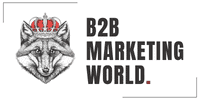
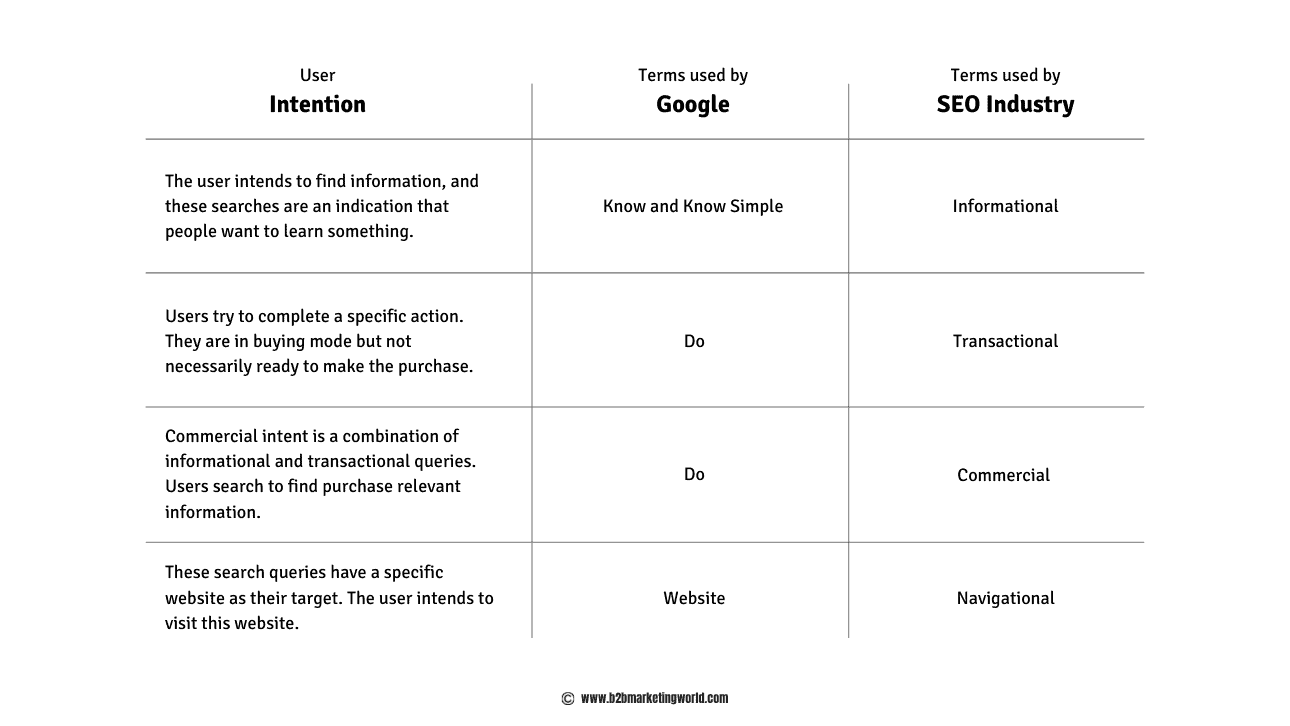
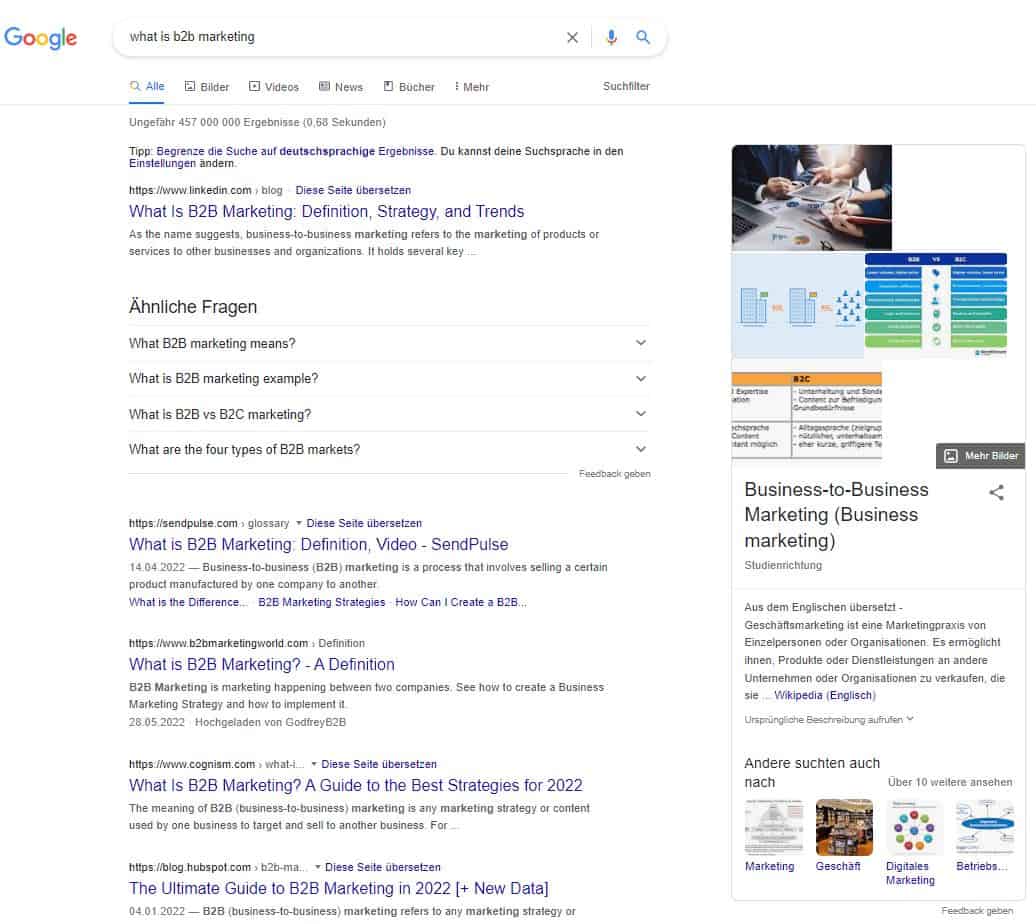
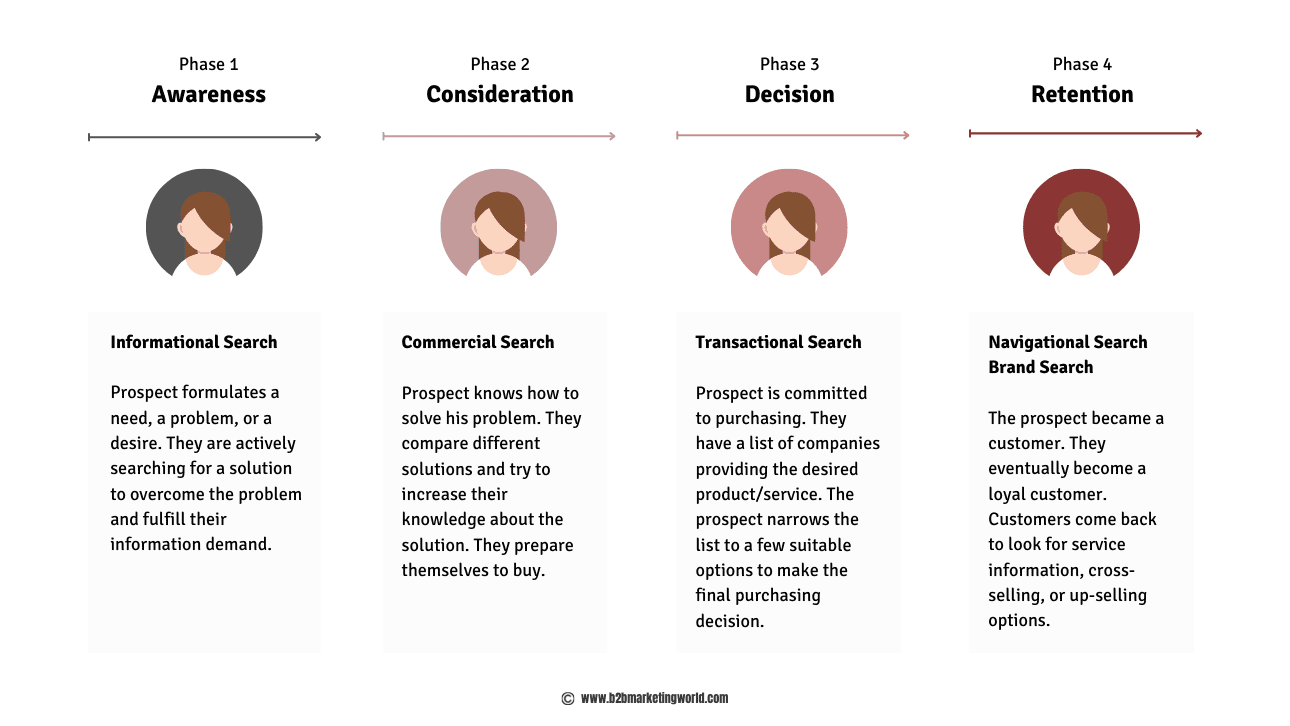
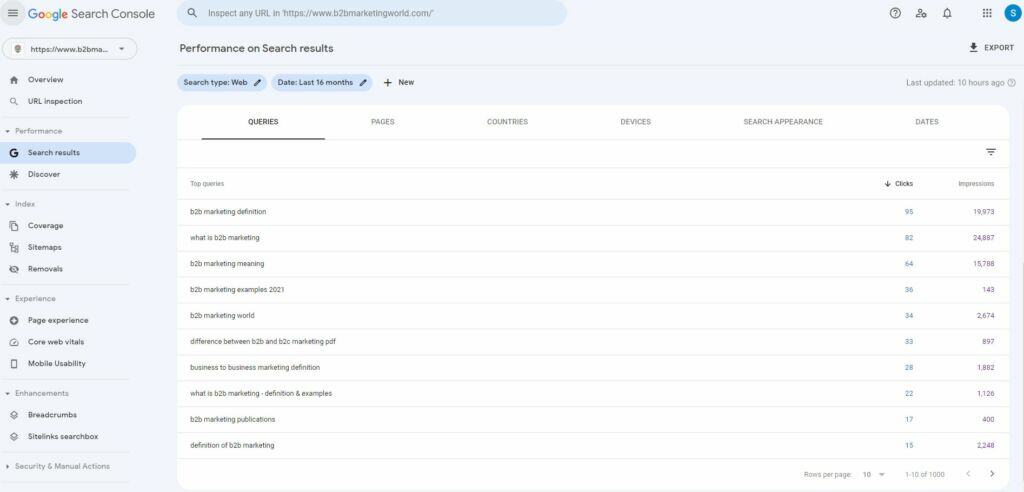
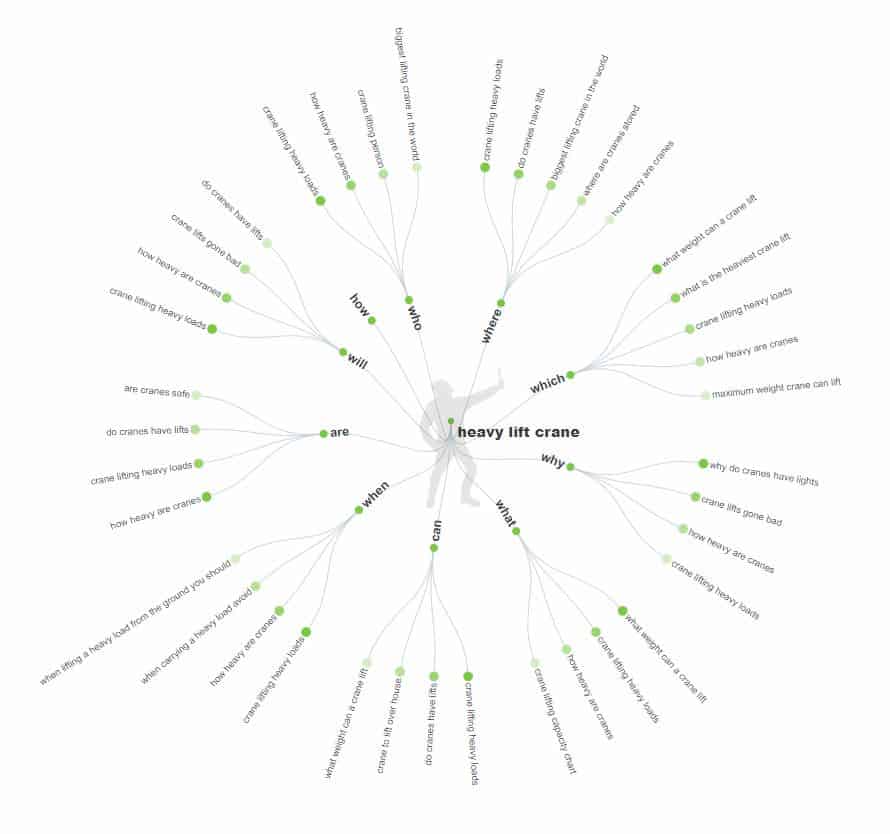


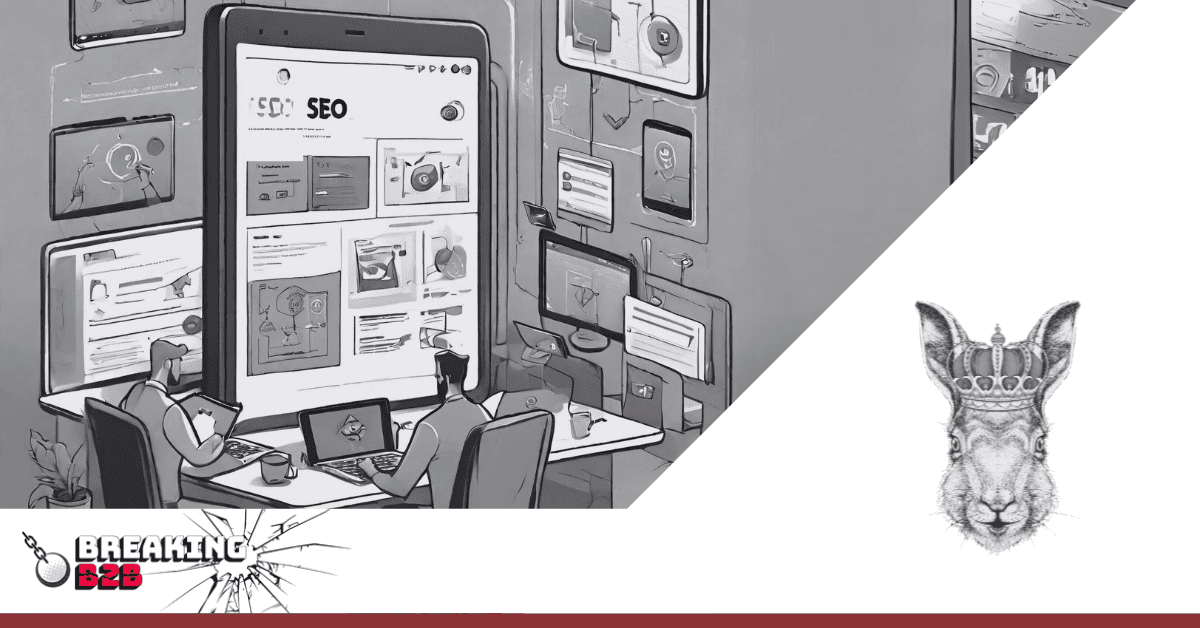



![How UTM Links help track your marketing with GA4 update - B2B Marketing World How UTM Links help track your marketing [with GA4 update]](https://www.b2bmarketingworld.com/wp-content/uploads/How-UTM-Links-help-track-your-marketing-with-GA4-update.jpg)
